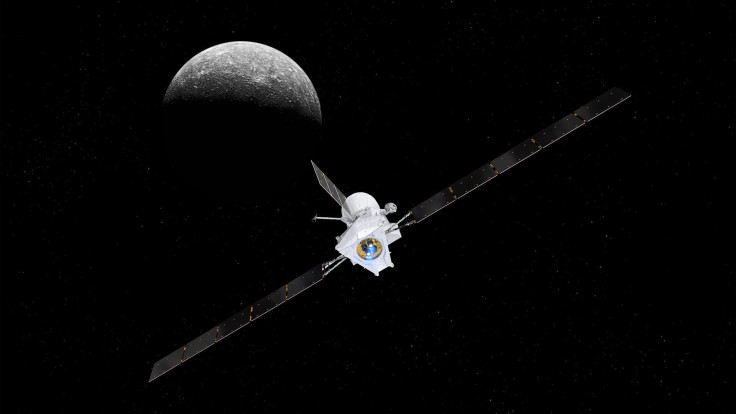ESA’s Mercury Spacecraft Will Study The Moon This Week

KEY POINTS
- BepiColombo will approach the Moon after the pink supermoon event
- The spacecraft will test its instruments on the Moon
- BepiColombo will use Earth's gravity to reach Mercury
As the pink supermoon debuts tonight, a spacecraft designed to explore Mercury will approach the Moon to closely observe it. The spacecraft is also expected to approach Earth before proceeding with its deep-space mission.
The BepiColombo is a mission launched through the joint efforts of the European Space Agency (ESA) and the Japan Aerospace Exploration Agency (JAXA). The main objective of the mission is to send a robotic spacecraft to Mercury’s orbit in order to perform a comprehensive study on the planet’s characteristics.
Before BepiColombo reaches Mercury, it will first carry out various flybys on nearby cosmic objects. One of these is the Moon, which the spacecraft will approach on April 9.
The spacecraft’s lunar visit will take place shortly after the debut of the pink supermoon, which will be the brightest full moon event of 2020. Once it gets close to the Moon, BepiColombo will use its instruments to study the lunar surface and take photos of it.
According to Harald Hiesinger of the German Aerospace Center and principal investigator of the mission, the purpose of the lunar flyby is to test BepiColombo’s instruments before traveling to Mercury.
“I am anticipating many exciting results from the observations with MERTIS,” he said in a statement. “After about 20 years of intensive preparations, the time will finally come on Thursday – our long wait will be over, and we will receive our first scientific data from space.”
As noted by Hiesinger, aside from serving as a testing ground, the Moon will also provide valuable information that can help the BepiColombo mission. Since the Moon and Mercury have slightly similar features, comparing data collected from these two cosmic objects can provide new information regarding their formation.
“The Moon and Mercury are not dissimilar in size, and their surfaces resemble one another in many ways,” Hiesinger stated. “We will obtain new information on rock-forming minerals and the temperatures on the lunar surface and will later be able to compare the results with those acquired at Mercury.”
After visiting the Moon, BepiColombo will approach Earth on April 10 for a gravity assist maneuver. This will enable the mission’s team to use Earth’s gravitational pull to slingshot the spacecraft towards the Sun, allowing it to proceed with its mission to Mercury.
© Copyright IBTimes 2025. All rights reserved.





















